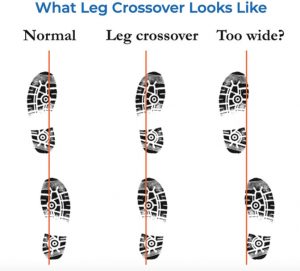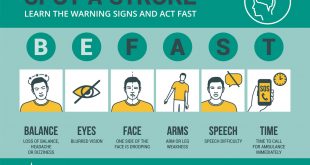By Regenexx at New Regeneration Orthopedics


Our Regenexx at New Regeneration Orthopedics team is getting excited to take on the St. Pete Run Fest November 11-13, 2022. Not only are we your title sponsor for the Half-Marathon, but we have our team members looking forward to running the half marathon, the 5k or the 10k that weekend. A lot of us have been following the Couch to 5k plan we outlined several weeks ago. Now that we are a few weeks out from race day, it is a perfect time to revisit some of the strategies we had shared in last year’s post: St. Pete Run Fest Debrief: Common Running Injuries. This article outlined the most common injuries we had seen in runners after the 2021 races.
In the spirit of prevention, we wanted to revisit the three best ways to make sure you have a happy, healthy, fun, and pain-free race this November!
The three best ways to prevent injury in a race are:
1 Proper Running Mechanics
2 Proper Footwear
3 Ramp-Up and Running Volume
Let’s dive into each of these reasons to help indenting which might resonate with your situation if currently nursing a running injury, or looking to have a successful race day. After all, Ben Franklin says it best “an ounce of prevention is worth a pound of cure.”
Proper Running Mechanics
The common reason for injury, improper running mechanics, is one of the most prominent causes of pain and injury when running because of the sheer repetition of the sport. If your gait has a hitch in it, that can lead to specific injuries. In the office, it is very important for a skilled clinician to look at a runner’s walking and running gait to assist in finding the root cause of the issue. Sometimes you see a runner and you can tell their gait looks “painful”, laborious or wild, or simply “not right”, but here are actually some more subtle aberrations to a runner’s gait that can cause some of the worst injuries we see. What happens in a foot strike determines what happens in every joint north of the foot. Your foot strike affects the big toe, ankle, shin, calf, knee, and so on. If you have flat feet or high arches that could affect how your foot strikes.
Where your foot lands on the ground relative to your body matters. Some runners over stride, or heel strike.
Some runners have a cross-over gait, meaning that their legs come closer to midline with each step rather than staying stacked under their hips.
All of these gait variations can cause overload in certain tissues or joints leading to injury, and can specifically help guide to the root cause of your pain. A skilled clinician can help you know which one of these might be you, so you can work to correct the problem.
If you have had any pain in your foot, ankle,knee, or hip when training for a race, you could reach out to a Regenexx to schedule a visit to assess these areas, or visit one of our local therapy partners like Back 2 Normal or Love Health to have your gait assessed, to check for muscle imbalances, and to gain self-care strategies to stay healthy and pain-free.
Proper Footwear
Footwear is an important part of having a healthy running experience that isn’t riddled with starting and stopping your training due to injury. However, people always ask, “What’s the best running shoe?” There isn’t just one straight answer to this question that applies to everyone. The best reply is, “The best shoe for you is the last known shoe you’ve had no injuries in.” In fact, there are shoes that are en vogue that might not be the best shoe for you.
Now, there are some shoes that we genuinely dislike. Some shoe designs go against what we know about mechanics and can contribute to injuries. For example, the new carbon-fiber plate technology in the forefoot of shoes are not a favorite of mine because it makes a shoe rigid where we need flexibility, mechanically speaking. Unless you are a world-class runner with no confirmed gait aberrations, this shoe is not the best for training or racing and staying pain-free.
Another thought about running shoe trends is the focus on “zero drop.” Unfortunately, the emphasis on using a “zero drop” shoe is too prominent when most people need to work up to being able to wear this type of shoe. A zero drop shoe, or when a shoe with an elevation change from toe to heel equals 0mm, requires a great amount of ankle flexibility and foot strength to manage. It takes time, stretching, and strengthening to be able to run miles in this type of shoe.
We frequently get asked a lot of questions around insoles for shoes. The main question is, “Do you think I need insoles?” The answer usually is, “it depends.” In general, we are minimalists when it comes to the level of insole intervention and love an insole like Superfeet. They have a fantastic online quiz that helps match you to the perfect type of insole for the type of support you might need.
If this conversation around footwear piques your interest or raises questions on if you’re in the right shoe, it’s a great option to go to a running specialty store like Fleet Feet , Fit To Run or St. Pete Running Company. These footwear professionals are a great help in getting you fit for a shoe and/or insole that would prevent injuries based on your foot’s structure and your gait pattern.
Appropriate Ramp-Up and Running Volume
This leads us to our third injury-prevention strategy: appropriate ramp-up to a large running volume. It is very important that you gradually increase mileage as you shoot for a race goal. There is a reason most race training plans span 12+ weeks – because it takes that amount of time to safely build a running base. Generally, training plans increase the mileage by about 10% each week, and provide a “peak” in training that is a few miles more than the goal race. An example of a peak in training is running 7 or 8 miles as a long run two weeks before a 10k, or 6.2 mile, race.
Sometimes people sign up for races and time gets away from them and they aren’t able to follow a training program and they run, say a maximum of 3 miles for a 6 mile race. This person is more prone to get injured because their body hasn’t seen that volume before. It is important to get miles under your feet to prepare for your target race. There is simply just no way around it!
If you haven’t been following a plan to prepare you for the St. Pete Run Fest, you have a few weeks to get some miles under your feet! See below for a four-week 5k prep plan to tackle from now until the St. Pete Run Fest weekend on November 11-13, 2022.
So, if you missed the memo on the details for mechanics, footwear, or racing ramp-up and you’re down with a sore foot, shin, or knee, Regenexx at New Regeneration Orthopedics can help get you back out there running. See you out there!
If you have any questions or concerns with a chronic pain, do not hesitate to contact us. Our experts will be happy to help you get back to doing what you love!
James Leiber, DO | Ron Torrance II, DO FAOASM
Ignatios Papas, DO | Lisa Valastro, DO
Regenexx at New Regeneration Orthopedics:
941-254-2757
2401 University Parkway, Sarasota
8600 Hidden River Parkway, Tampa
100 2nd Avenue South, St. Petersburg
1412 Trovillion Avenue, Winter Park
Images:
1 http://www.teamchiroames.com/blog/the-ideal-running-gait-focus-on-foot-strike
2 https://www.runandbecome.com/running-product-advice/know-foot-strike
3 https://runnersconnect.net/diagnose-running-knee-injuries/
4 https://runsmarter.online/running-technique-step-width/
5 https://marathonhandbook.com/couch-to-5k-training-plan/
 Southwest Florida's Health and Wellness Magazine Health and Wellness Articles
Southwest Florida's Health and Wellness Magazine Health and Wellness Articles

